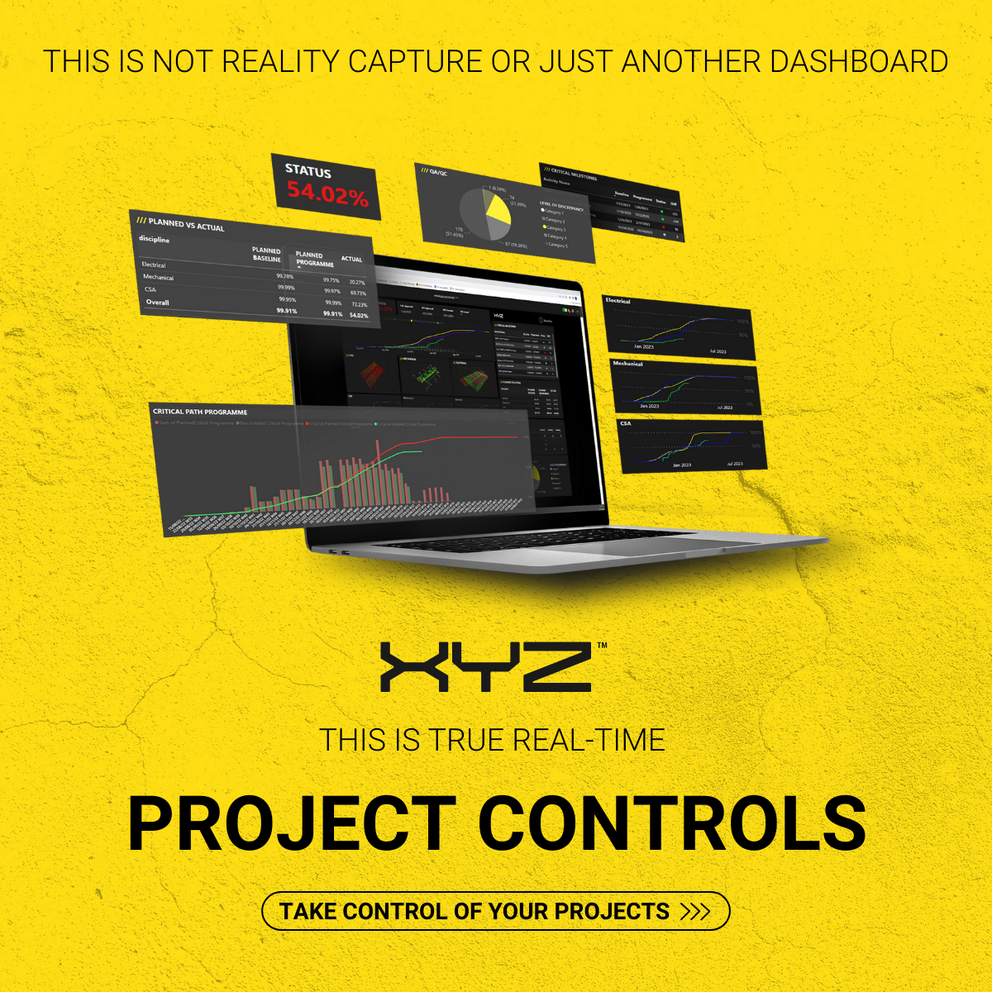-
Services
Services
Find out how we work with our clients and deliver value to construction projects from day one
-
Solutions
Solutions
Discover how all our solutions sync together to deliver construction's most powerful BIM platform to date
-
Built for
Built for
-
Industry
Industry
Understand how we support construction's biggest sectors, and hear from our clients who have experienced the power of XYZ
-
Resources
Resources
Get stuck into all our latest thought leadership, news, reports and industry leading content
-
Company
Company
Dive into what makes XYZ tick, unearth why construction is in our DNA and why we are world leaders in AR solutions

Insights
Data Management in BIM: Everything You Should Know

11 September 2023
In a sector where precision and efficiency are of utmost importance, effective data management assumes a pivotal role in guaranteeing productivity. In the construction industry, a lack of proper data management can lead to issues in building projects, such as delayed timelines and budget overruns.
This article will provide a comprehensive exploration of effective data management in BIM, explaining its significance, challenges, and advantages. We will also take a look at how XYZ Reality’s tool suite can help your construction business improve your data management and overall productivity.
The importance of data in construction projects
Data is a fundamental component of every project. Data can include a wide range of information, including research, statistics, and specific project information, and can be displayed in various ways, from basic spreadsheets to intricate three-dimensional models.
For mission-critical construction projects, with multiple teams and departments working together on the same build, accurate data is an essential component that helps ensure everyone is on the same page. Construction projects are best run on factual information as opposed to subjective assessments.
Numbers and values help to eliminate guesswork and therefore eliminate rework. For example, if a team needs to evaluate the status of a project, it’s much more valuable to use a detailed, accurate progress checklist from a tracking software than a generalized estimate of values.
Using data, teams can differentiate what’s completed from what’s not, identify issues, and streamline workflows for faster builds and better projects.
What is BIM?
BIM, or Building Information Modeling, is a technology used to create digital representations or models to assist in the development, design and execution of construction projects.
However, a BIM model encompasses more than a mere three-dimensional depiction of a structure. The structured database is a repository and management tool that can be linked to various technologies that aid in clash detection, budgeting and financing of projects.
For example, XYZ’s construction progress tracking tools let project managers tag each component of the BIM model to the construction schedule for streamlined tracking and easier management.
The purpose and use of BIM data
There are several benefits and uses for BIM data that span the entire construction process from design and clash detection to auditing and regulatory compliance.
Let’s take a look at how BIM data can be effectively used in the construction process:
Saves time and money
In every sector – the construction industry in particular – efficiency is crucial. Research from our Constructing Tomorrow Report revealed that in data of more than 500 construction professionals across the US and UK, 99% of respondents had projects delivered out of schedule.
Of these extended timelines, the top reasons were: design changes, labor shortages, poor communication and project data, and rework due to errors.
The use of BIM data helps improve productivity and efficiency so teams can get their projects done quicker and for fewer dollars. A centralized platform allows for easy collaboration and unmatched data accessibility. Not only this, software like XYZ BIM integrates with other construction and management software or tools for seamless use throughout the duration of the project.
Check out our integrations with Autodesk, Navisworks and Revit, and see how you can have better control over your entire build.
Improves clash detection
Undetected clashes can be undoubtedly ruinous to a construction project. Imagine this: your team has done great work and everything is on schedule until you notice something isn’t where it should be, meaning everything will have to be rebuilt. Fortunately, with the help of BIM data, teams can mitigate this and keep their clients happy.
XYZ BIM even integrates with the Atom™, a construction-grade augmented reality headset that loads and overlays BIM data over your construction site. Teams can detect and fix issues on the job site or remotely, and everything gets loaded directly into the construction cloud so the rest of the team gets instant project updates.
Smoother stakeholder communication
Meetings and communications are crucial to every project. Better communication means better productivity. BIM data helps keep everyone on the same page and the same platform. This way, stakeholders have quicker access to the numbers and information they need.
Easier audits and regulatory compliance
In addition to design and clash detection, BIM also makes it easier for auditors to ensure projects meet the necessary standards and regulatory requirements. Professionals can view the 3D model to assess it and make adjustments if needed.
With BIM, you can eliminate reactivity and become more proactive in the construction of your project.
Why is data quality assurance important?
Data quality assurance pertains to the assurance of the correctness, consistency, and dependability of the information used to support project decisions and activities. In a sector where mistakes can be disastrous, data quality is critical.
Data quality can help with the following:
Mitigation of financial mistakes
Accurate information helps reduce the likelihood of errors during a project's planning and implementation stages. Acquiring accurate information, such as the dimensions of a structural component or the quantity of materials required, is essential for the timely completion and reasonable cost of a project.
Improving the process of decision-making
The foundation of well-informed judgments is the availability of dependable data. Construction project managers and contractors depend on precise data to make informed decisions that benefit the project, ranging from design modifications to schedule changes.
Enhancing collaborative processes
In collaborative building projects, several teams and stakeholders rely on shared data. Ensuring its accuracy promotes good communication and cooperation, hence decreasing the potential for miscommunication and disagreement.
Accurate, professional data management with XYZ Reality.
The management of data within BIM extends beyond the mere processing of information. It helps to harness the full potential of building projects. Construction professionals with a comprehensive knowledge of BIM and the data it can hold are better equipped to effectively manage intricate projects.
BIM is dominating the construction industry with its unique ability to enhance productivity and streamline processes. What’s next for BIM? Meet XYZ Reality – the company enhancing the top tool in the construction industry today.
XYZ Reality introduces their groundbreaking Atom™, a headset that incorporates Engineering Grade Augmented Reality (AR) technology into construction sites and, by extension, enhances productivity, precision, and efficiency. The headset, which integrates with XYZ BIM and the suite of tools, enables teams to superimpose 3D holographic representations of their concepts with a high level of precision, accurate to the millimeter.
XYZ Reality's technology effectively enables seamless connectivity between on-site and off-site teams, thereby enabling prompt and real-time modifications to design blueprints anytime, from anywhere.
We’re committed to helping the construction industry eliminate rebuilds, reduce costs, and minimize project delays. Build better the first time with XYZ Reality. Book a demo with XYZ today!






